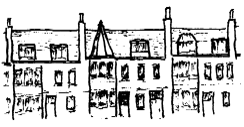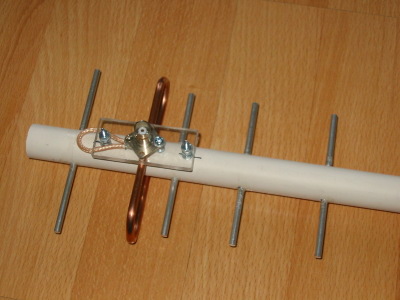
John's homebrew pages
23cm 15 element portable Yagi antenna
As the 23cm transverter project progresses, I'm getting closer to that first QSO! To maximise my chances I want a decent antenna (and have plans for - eventually - an even better one than this).I had made a bi-quad antenna (a short description is on my antennas page) which works fine, is nicely directional, but is a bit limited in gain. I had always wanted to try the DL6WU designs (having been a fan of the DK7ZB designs - see other antenna projects) and came across design software from VK5DJ. This works fine under Wine on Linux and I used it to calculate elements for an antenna short enough to carry easily up SOTA summits. Once sawn up, here are the bits; 4mm aluminium rod (from B and Q) for the directors and reflector, 5mm copper (from the junk box - I have no idea where I got it from, it was very dirty but wire wool gave it a lovely shine!) for the folded dipole driven element.
The folded dipole tok a few tweaks to get right, using a broom handle and file handle as the hard round surfaces to bend the copper on. It's mounted on a piece of prespex, to which the BNC connector is also fastened; the dipole is simply well soldered to the connector pin. This close-up shows the balun which matches the coax to the folded dipole.
Here's a close-up of the business end of the Yagi. If you look carefully you can see the aluminium elements are glued into place in the plastic tube. The screws holding the perspex are short; there are access holes in the other side of the white tube to allow the screw heads and screwdriver to pass through.
Finally, here's the whole thing. At this length, it doesn't flex very much. It seems to work well; I used it to pick up a very strong signal from the GB3ANG 23cm beacon from the car park at the Hillend ski slope above Edinburgh. It's also nice and directional, of course, much more so than the bi-quad antenna.
This antenna has worked very well indeeed in practice. It has an
excellent front to back ratio, and is very pointy! You need a lot of
elements to get a lot more gain than this in a single antenna.



